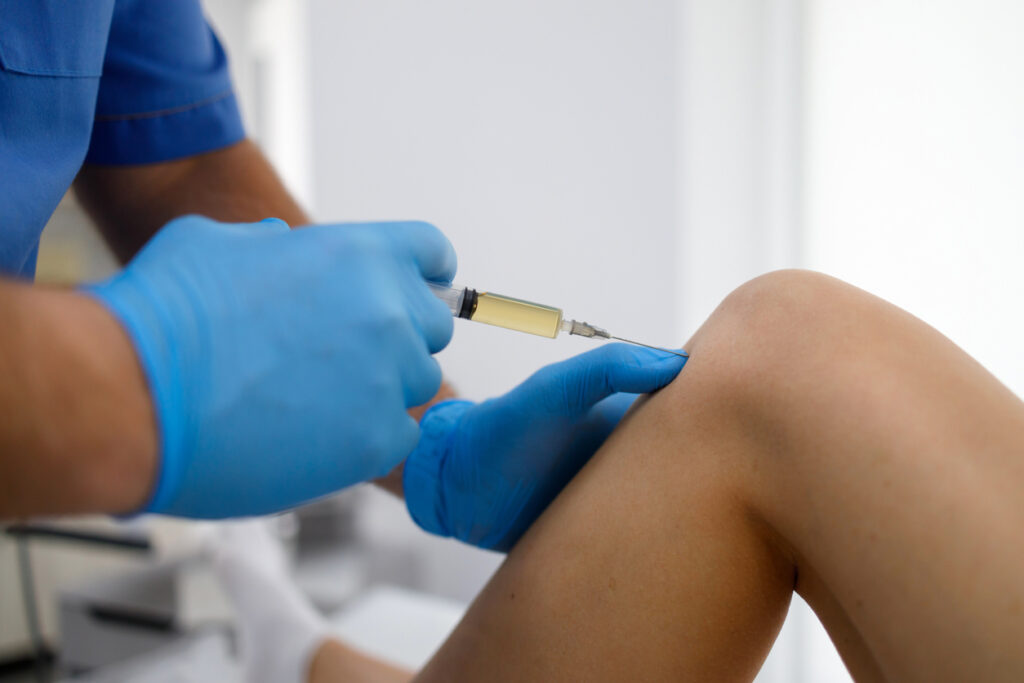
Advancements are continually being made in modern medicine to help us recover faster and more effectively from injuries. One such innovation that holds immense promise is Platelet-Rich Plasma (PRP) therapy.
This cutting-edge approach utilizes the body’s natural healing capabilities to expedite recovery from orthopedic injuries affecting muscles, joints, and tendons. In this article, we will delve into the science behind PRP therapy and its applications in orthopedics.
Understanding PRP Therapy
At its core, PRP therapy revolves around utilizing platelet-rich plasma to encourage and amplify the body’s innate healing mechanisms. But what exactly is platelet-rich plasma?
Platelet-rich plasma is a concentrated component of blood derived from the patient’s own blood sample. This plasma contains a high concentration of platelets, which are tiny cells responsible for clotting, and a host of growth factors that play pivotal roles in tissue repair and regeneration.
Application of PRP Therapy in Orthopedic Injuries
Platelet-rich plasma (PRP) therapy is revolutionizing orthopedic injury recovery. By tapping into the body’s natural healing mechanisms, PRP therapy expedites healing in muscles, joints, and tendons.
Muscle Healing
PRP therapy contributes to muscle recovery by accelerating the healing of damaged muscle tissue.
The growth factors present in platelet-rich plasma do two things. First, they stimulate the proliferation of cells responsible for tissue regeneration. Second, they minimize scar tissue formation.
This dual action promotes more efficient healing and restoration of muscle function, allowing individuals to regain their strength and mobility faster.
Joint Recovery
Joints are prone to various injuries, including sprains, cartilage damage, and the degenerative effects of osteoarthritis. PRP therapy has emerged as a promising solution for joint recovery.
The growth factors in platelet-rich plasma contribute to joint lubrication, reducing friction and discomfort.
These growth factors also help repair damaged cartilage, a crucial component for smooth joint movement. Individuals with joint injuries can experience improved function and reduced pain by harnessing the regenerative potential of platelet-rich plasma.
Tendon Repair
PRP therapy has shown remarkable effectiveness in promoting tendon repair. The growth factors in platelet-rich plasma increase collagen production, which is crucial for tendon strength and integrity.
This not only aids in faster healing but also reduces the risk of re-injury, allowing individuals to resume their regular activities sooner.
Eligibility for PRP
The journey to harnessing the healing power of PRP therapy begins with a thorough consultation and assessment by a qualified healthcare professional. The healthcare provider will consider the patient’s injury type, medical history, and suitability for PRP therapy.
Additionally, they will discuss the procedure’s benefits, risks, and expected outcomes with the patient. It’s vital that patients can make informed decisions about their health.
What Happens During PRP Therapy
If the patient is suitable for PRP therapy, the procedure involves several steps.
First, a healthcare professional will draw a blood sample from the patient, much like a routine blood test. This sample is then processed in a centrifuge, which separates the blood into its different components. The platelet-rich plasma is isolated and prepared for administration.
The final step involves injecting the PRP directly into the injured area, guided by techniques such as ultrasound or fluoroscopy to ensure precise placement.
Expected Benefits and Results
The advantages of PRP therapy in accelerating recovery from orthopedic injuries are remarkable. One of the key benefits is its ability to speed up recovery time. The growth factors in platelet-rich plasma stimulate cell growth and reduce inflammation.
PRP therapy also may offer pain relief by reducing inflammation and promoting cartilage repair. This can be especially beneficial for individuals with chronic conditions such as osteoarthritis.
PRP therapy also contributes to enhanced tissue quality. Collagen, a vital structural protein, plays a significant role in the strength and function of muscles, tendons, and joints.
Platelet-rich plasma promotes collagen formation, leading to improved tissue integrity and function and also decreasing the formation of scar tissue.
Considerations and Precautions
While PRP therapy holds great promise, not every individual or injury is suited for this treatment. Patient selection is a crucial consideration. Factors such as age, overall health status, and the severity of the injury must be taken into account to determine a patient’s suitability for PRP therapy.
Patients need to have realistic expectations about the procedure’s outcomes, as responses to PRP therapy can vary among individuals. However, most patients experience noticeable benefits from PRP therapy if a provider determines their condition eligible for PRP treatment.
Platelet-Rich Plasma Therapy in Delaware
PRP therapy stands as a testament to the power of harnessing the body’s innate healing capabilities. By concentrating platelets and growth factors into platelet-rich plasma, this innovative approach has shown remarkable potential in accelerating recovery from muscle, joint, and tendon injuries.
If you’ve recently suffered an orthopedic injury or have a chronic orthopedic condition and would like to try platelet-rich plasma therapy, contact Delaware Back Pain and Sports Rehabilitation Center at the location nearest you. Our expert orthopedic providers will be happy to help guide you on your path to optimal healing and recovery.
You can fine the phone number for our clinic most convenient for you here or you can request an appointment here. We look forward to getting you back to your life pain-free!


